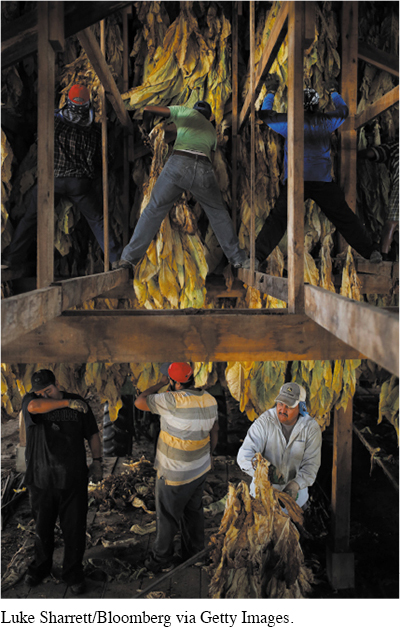The Internationalization of the United States
The United States experienced the dynamic forces of globalization in many ways. Already in the 1980s, Japanese, European, and Middle Eastern investors had purchased U.S. stocks and bonds, real estate, and corporations. Local communities welcomed foreign capital, and states competed to recruit foreign automobile plants. By 2002, the paychecks of nearly four million American workers came from foreign-owned companies such as Honda and BMW.
Globalization was also transforming American society, as the United States experienced a tremendous surge of immigration, part of a worldwide movement of some 214 million immigrants in 2010 alone. By 2014, the United States’ 42.2 million immigrants constituted 13.2 percent of the population. In contrast to earlier immigrants, who had come largely from Europe, by the 1980s the vast majority came from Asia, Latin America, and the Caribbean. Consequently, immigration changed the racial and ethnic composition of the nation. By 2014, 55 million Latinos constituted the largest U.S. minority group, at 17 percent of the population. But since 2010, more immigrants have come from Asia than from Latin America.
The promise of economic opportunity, as always, lured immigrants to America, and the Immigration and Nationality Act of 1965 enabled them to come. The law allowed close relatives of U.S. citizens to enter above the annual ceiling of 270,000 immigrants, thus creating family migration chains. Moreover, during the Cold War, U.S. immigration policy was generous to refugees from communism, welcoming more than 800,000 Cubans and more than 600,000 Vietnamese, Laotians, and Cambodians. [[LP Photo: P31.06 Migrant Workers/

The racial composition of the new immigration heightened the long-standing wariness of native-born Americans toward newcomers. Pressure for more restrictive policies stemmed from beliefs that immigrants took jobs from the native-born, suppressed wages by accepting low pay, strained social services, or eroded the dominant culture and language. Americans expressed particular hostility toward immigrants who were in the country illegally, estimated at 11.3 million in 2014, even though the economy depended on their cheap labor.
The new immigration was making America an international, interracial society. The largest numbers of immigrants flocked to California, New York, Texas, Florida, New Jersey, and Illinois, but new immigrants dispersed throughout the country. Taquerias, sushi bars, and Vietnamese restaurants appeared in southeastern and midwestern towns; cable TV companies added Spanish-language stations; and the international sport of soccer soared in popularity. Mixed marriages displayed the growing fusion of cultures, recognized in 2000 on Census Bureau forms, where Americans could check more than one racial category. Like their predecessors, the majority of post-1965 immigrants were unskilled and poor. They took the lowest-paying jobs, constituting nearly half of all farmworkers and housekeepers. Yet a significant number of immigrants were highly skilled workers, sought after by burgeoning high-tech industries. By 2006, nearly one-third of all software developers were foreign-born, as were 28 percent of all physicians.
> QUICK REVIEW
What key issues surrounding globalization did the United States face in the 1990s?
Understanding the American Promise 3ePrinted Page 899
Section Chronology